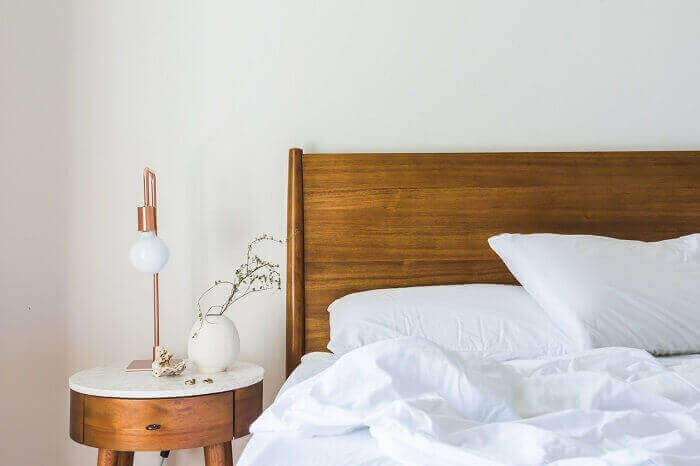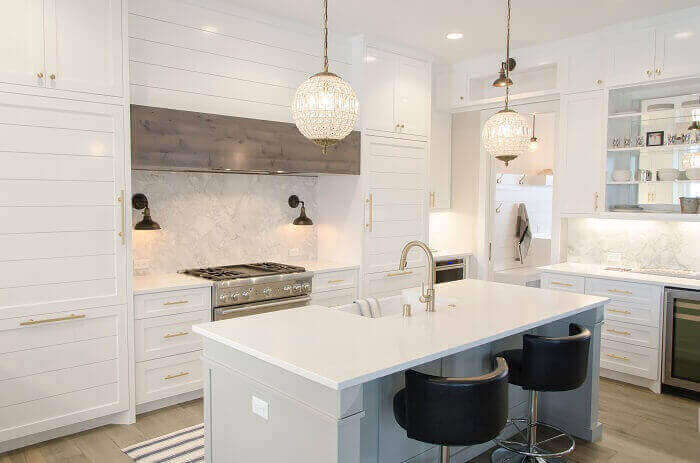If you have a problem with allergies then for sure you want to know the best ways how to get rid of allergens in your home. In our homes always can be found allergens like mold, dust mites, mildew, pet dander, cockroach droppings, and pollens that can be the main reasons for triggering allergies and asthma symptoms and make to suffer millions of people around the world.
These allergens can be found almost on every surface in our homes like on the floors, furniture, bathroom, basement, our clothes, on our pets and other places. There is no home that can be completely 100% free of allergens but by constantly maintaining the cleanliness in our homes we can drastically reduce and control the allergens.
Here are the best-proven tips to reduce the allergens in our homes. By following these tips you can make your home to be a better place for a living.
Watch the Video: How to Clean a Room to be Allergy-Free
The Best Proven Tips How to Get Rid Of Allergens in Your Entire Home
These are generally basic and simple tips that you need to follow on how to reduce the allergens in your home on a daily basis:
Number 1: Control the Temperature and Humidity
You need to control the temperature and humidity in your home because the dust mites and mold spores need heat and humidity for their grown. If you maintain the temperature between 20 Celsius (20 Fahrenheit) and 22 Celsius (71.6 Fahrenheit) and the level of humidity to be maximum 50 percent, the grown of the dust mites and the mold spores can be reduced at some level.
Number 2: Use Particle Filters
Make sure in central heating, the cooling systems and in the air conditioner to use small particle filters. Once a month you need to clean them or to replace them with new ones.
Number 3: Control The Insects and Rodents
Also, you need to control the insects, mice and other pests in your home by placing traps and sealing all cracks so they cannot enter inside your home.
Number 4: No Smoking At Home
Forbid smoking in your home. If someone needs to smoke a cigarette, tell him or her to go outside for a few minutes, there is nothing wrong with that. It’s all about your health.
Number 5: Take Care of Your Pets
Try to keep your pets outside. If you love to keep the pets inside, groom them properly, at least once a week bathe them and wash their bedding.
Number 6: Get Rid of The Clutter
Remove the clutter in all of your rooms, things like toys, magazines, books, and piles of clothes are dust attractors.
Number 7: Clean The Bedroom

Bedrooms are places where we are spending a lot of time and it is obvious to do a deep cleaning once a week. The first thing you need to do is to wash all blankets, pillowcases, and sheets in your washing machine with hot water.
To protect yourself or someone in your family from allergies never hung the bedding outside for air drying, because the pollens will easily attach on your bedding. Always use a clothes dryer and every time before drying your bedding or clothes in your dryer clean the lint filter.
When you do a deep cleaning in your bedroom it is wise to start from the top and continue with cleaning down. For example, first, wash the curtains and then you can start with dusting the corners on the walls, blinds, light fixtures, ceiling fans, and the furniture. For the dusting, you can use a microfiber cloth and vacuum upholstered tool.
When you are finished with dusting, now is the time to do vacuum cleaning. It is recommended to own a specially designed vacuum cleaner for allergies with HEPA filter. When you do vacuum cleaning, you need to pay attention to places under your bed and the furniture.
When you are done with vacuuming, remove the vacuum hose and leave your HEPA vacuum cleaner turned on for about 5 to 10 minutes to purify the air in that area.
Make sure all your closets are closed so you can minimize transferring the allergens into the air from the clothes. All the clothes that you are not using you can store them into plastic bags or bins to minimize the attraction of the dust.
RELATED: How You Can Reduce the Dust in Your House
Number 8: Clean The Bathroom
The bathrooms are places where always can be found the build-up of mildew or mold. You can remove and prevent mildew growth with chlorine bleach or any other commercial mildew cleaner.
Before using the chemicals always you need carefully to read the directions of using.
IMPORTANT TO REMEMBER: NEVER MIX THE CHEMICALS !!!
To remove the build-up of mildew first you need to prepare a mixed solution of bleach chlorine and water. The mixed solution should be one part of bleach and three parts of water.
When you are cleaning the bathroom always wear plastic or rubber gloves. To remove the mildew from any surface you can do by scrubbing with a stiff brush. In tight corners, you can apply the bleach-water solution by spraying and after 10 to 15 minutes, you can scrub and rinse those places.
It is good in your bathroom to have installed an exhaust fan to extract the humid air, during and after the showering (or bathing).
After every use of the bathroom with a dry towel wipe the tub and the shower enclosure. Often wash the bathmats, rugs and the shower curtains to prevent the growing-up of mildew. Also, often check if there is any leakage from the sink, toilet or the tub and right away do a repair.
Number 9: Clean The Living Room
The same way like in the bedroom, you can do a deep cleaning of the living room once a week, starting from the top on the high corners of the walls, ceiling fans, light fixtures, blinds, windows, curtains, furniture, fireplaces, so the dust and all allergens can fall down on the floor and then can be easily cleaned by your HEPA vacuum cleaner or a damp mop.
Besides the HEPA vacuum cleaner for purifying the air and to get rid of the allergens and dust, you can use a high-quality air purifier with HEPA filter. We recommend doing a vacuum cleaning on the floor in the living areas, every second day to successfully controlling the allergies.
RELATED: The Best Steps How to Use a Vacuum Cleaner
Number 10: Clean The Kitchen

The kitchen is a perfect place for the growth of the mold and mildew and also for insect droppings. To prevent this problem you need to have installed an exhaust fan to reduce the level of moisture. Often check if there are any leakages under the sink, refrigerator, freezer, and the wine cooler. Those are the places where you can usually find the mold or mildew and also growing up insects who are the reasons for spreading many diseases and causing many allergies.
Once a week clean the whole interior of the refrigerator. Wipe if there are any spills, leakage, food leftovers, wipe down the door seals and the bottom. Also, check the refrigerator for outdated and moldy food to be discarded.
The food in the kitchen should be stored in plastic or metal containers and properly labeled with the date and time when it was opened for the first time, so in this way you can know which food is fresher and which one should be discarded soon.
Make a habit, after every meal, wash the dirty dishes by hand or use a dishwasher which is highly recommended. The dishwasher can properly wash, sanitize and dry the dishes. This is especially important for people with allergies. Read our dishwasher buying guide.
On a daily basis, you need to empty and clean the trash bin to prevent growing up of cockroaches and attracting rodents. It is recommended every three months you need empty and clean all the cabinets and drawers where you keep the food from crumbs and food leftovers.
Number 11: The Entrance of Your Home
Another great way to reduce and control the allergens in your home is to prevent them from entering inside. Do a weekly cleaning outside the entryways. Anybody before entering your home needs to take off the shoes. Your outerwear and footwear should be stored at the entry in special closets for outerwear and footwear.
Number 12: The Laundry Room
A laundry room is a place where there is a high level of moisture and heat which an ideal place for mold and mildew. Check if there is any leakage and if so, immediately you need to repair it.
As we said before in this post, don’t forget to clean the lint filter of the dryer before and after using the dryer. Every three months check if the dryer vent is clean and functioning properly.
Number 13: The Basement and The Storage Room
The basements and storage areas are places where there is a high level of humidity, can be accumulated a lot of dust, the mildew can grow, rodents and insects can be found, which is not a pleasant place at all, for those who have asthma and allergies.
Also in these areas, you need to check if there are any leakages to repair them, you should have installed a tile floor for easy cleaning. In the basements and storage rooms is recommended using a quality dehumidifier to reduce the moisture from the air and cleaning the floor with a vacuum cleaner with HEPA filtration. In these areas, it is not recommended to use a wall to wall carpet.
Your Best Products for Cleaning
You need to be careful when you are choosing the cleaning products because many of them can irritate your skin and also they can cause the same symptoms as the allergens can do.
Try to avoid products for cleaning that contain chemicals like sodium hypochlorite, formaldehyde, ammonia, sodium lauryl sulfate or d-limonene.
Anytime before you use any of the cleaning products it is important to read labels and their directions on how to be used. You can also use natural products for cleaning like lemon juice, baking soda or white distilled vinegar.
Best Cleaning Tools for Successful Cleaning the Allergens
Wear a Respirator Mask
If you are the one who has allergy or asthma and you need to do the cleaning of the allergens in your house we are suggesting you always wear an N95 respirator mask.
This mask successfully will prevent 95% of the allergens from entering into your airways and it is available almost in any medical supply stores and also you can check in some of the drugstores.
Disposable Protective Gloves
Whenever you clean your house, always you need to use disposable or washable protective gloves to protect your skin from the chemical cleaning products. Avoid gloves with latex; they can irritate your skin.
Washable Microfiber Cloth and Mop
Use a mop with a washable microfiber cloth for more effectively removing the dust from the floors. After every using of a mop, you need to wash the microfiber cloth into the washing machine.
HEPA Vacuum Cleaner for Allergens
Use a HEPA certified vacuum cleaner specially designed for cleaning allergens. These types of vacuum cleaners can eliminate 99.9% of all allergens and at the same time, they are able to purify the air.
To be honest, never you are going to find a way how to get rid of allergens in your home 100%, it is impossible. But if you use all of these steps explained here when you clean your home, for sure drastically you are going to reduce the allergens.




0 Comments